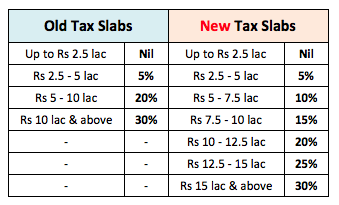Income Tax Slab Budget 2024 Updates
Finance Minister Nirmala Sitharaman today on February 1 presented the Union Budget 2024 inside the Lok Sabha. No changes have been introduced in the tax slabs in old and new tax regimes. It is an Interim budget, the Finance Minister announced no changes in direct and indirect taxes. The full finance budget will be presented in July this year after the new government is formed after General Elections.
As taxpayers eagerly anticipated the budgetary announcements, the absence of alterations to the income tax slabs comes as a relief, offering a reprieve from the potential uncertainties that often accompany changes in tax policies. This article delves into the implications of the unchanged income tax slabs and rates, exploring the reasons behind this decision, its impact on different strata of taxpayers, and the broader economic implications in the coming financial year.
The Union Finance Minister further said that the average time for refund has reduced from 93 days in 2013-14 to just 10 days in the last year. She added that people's average real income has increased by 50%.

Withdrawal of Outstanding demand of previous years
Sitharaman, however, offered relief to taxpayers in interim budget 2024-25. Sitharaman announced withdrawing a large number of outstanding demand of previous years. In her speech, the finance minister said: "There are a large number of small, unverified, unapproved or disputed direct tax claims, many dating back to 1962, which continue to remain on the books. , causing concern to honest taxpayers and preventing refunds in subsequent years. She propose to withdraw such outstanding direct tax claims up to twenty-five thousand rupees (Rs 25,000) for the period up to the financial year 2009-10 and up to ten thousand rupees (Rs 10,000) for the financial years 2010-11 to 2014-15. About a million taxpayers are expected to benefit."

Income Tax Slab rates for AY 2025-26
For the financial year 2024-25 (assessment year 2025-26), the income tax slab rates for individuals under the old tax regime are as follows:
- Income up to Rs 2.5 lakh: Nil
- Income between Rs 2.5 lakh and Rs 5 lakh: 5%
- Income between Rs 5 lakh and Rs 10 lakh: 10%
- Income above Rs 10 lakh: 30%.
Deductions and Exemptions
- Taxpayers under the old regime can avail of several deductions and exemptions which can significantly reduce their taxable income and lower their tax liability.
- Popular deductions include those under Section 80C (for investments like PPF, ELSS, etc.), Section 80D (for medical health insurance premiums), and Section 24 (for home loan interest).
- Apart from those deductions, taxpayers also are eligible for several exemptions such as the exemption for the Leave Travel Allowance (LTA), House Rent Allowance (HRA), and the exemption for the gratuity received by employees, amongst others. These exemptions can appreciably reduce the taxable profits and decrease the tax liability for the taxpayer.
For the financial year 2024-25 (assessment year 2025-26), the income tax slab rates for individuals under the new tax regime are as follows:
- Up to Rs. 3 lakhs - Nil
- Rs. 3lakhs to Rs. 6 lakhs - 5%
- Rs. 6 lakhs to Rs. 9 lakhs - 10%
- Rs. 9 lakhs to Rs. 12 lakhs - 15%
- Rs. 12 lakhs to Rs. 15 lakhs - 20%
- Above Rs. 15 lakhs - 30%
Deductions and Exemptions
Under the new tax regime, taxpayers are not eligible for certain deductions and exemptions, like deductions U/S 80C, Section 80D etc. However, A taxpayer is still eligible to claim some deduction like interest on home loans under Section 24, deduction of NPS under Section 80CCD(1B) etc. These deductions are subject to a maximum limit as per act, and taxpayers is not eligible to claim any other deductions or exemptions.
Conclusion
The choice of tax regime depends on individual tax liability and the deductions and exemptions they are taking. Taxpayers with lower incomes and those who do not have any investments or expenses can opt the new tax regime more beneficial. On the other hand, taxpayers with higher incomes and those with investments or expenses that qualify for deductions and exemptions may find the old tax regime more beneficial.
The author is an Income Tax, Accounting and GST Practitioner.





 CAclubindia
CAclubindia
